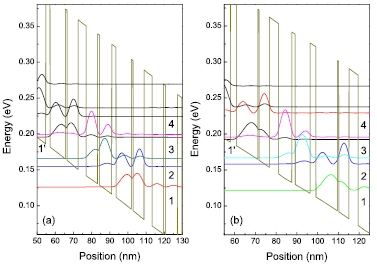-
Transient energy relaxation in scattering-assisted terahertz quantum cascade lasers
We adopt a self-consistent Maxwell–Bloch method to investigate the energy relaxation process from unsaturated to saturated in the scattering-assisted terahertz quantum cascade laser. In the lasing-establishment process, more nonequilibrium LO phonons are accumulated and more electrons are thermalized. At the same time, more efficient energy relaxation of the saturated situation can be found compared with the unsaturated situation. These phenomena stem from the improved electron transport efficiency across the active region, due to the lasing-induced lifetime reduction of electrons in the upper lasing subband. The simulation results are qualitatively identical with previous experimental results. Published by AIP Publishing
-
Frequency Up-Conversion Photon-Type Terahertz Imager
Terahertz imaging has many important potential applications. Due to the failure of Si readout integrated circuits (ROICs) and the thermal mismatch between the photo-detector arrays and the ROICs at temperatures below 40 K, there are big technical challenges to construct terahertz photo-type focal plane arrays. In this work, we report pixel-less photo-type terahertz imagers based on the frequency up-conversion technique. The devices are composed of terahertz quantum-well photo-detectors (QWPs) and near-infrared (NIR) light emitting diodes (LEDs) which are grown in sequence on the same substrates using molecular beam epitaxy. In such an integrated QWP-LED device, photocurrent in the QWP drives the LED to emit NIR light. By optimizing the structural parameters of the QWP-LED, the QWP part and the LED part both work well.

